
In the days since undercover police officers shot 50 bullets outside a strip club in Queens, killing 23-year-old Sean Bell on his wedding day and seriously wounding two of his friends, New Yorkers have experienced sadness, anger -- and deja vu.
Much about Bell's death and its aftermath have proved disconcertingly familiar. The victims were black. The police thought they had a gun, but like Amadou Diallo, Timothy Stansbury and others, they did not. None of the victims has been charged with a crime. Black leaders decried the police killing of another young unarmed black man. In response, lawyers for the officers and police unions offered testimonies to the character and professionalism of the (still officially anonymous) officers involved. And so on.
Many New Yorkers, particularly white New Yorkers, believe that much has changed in the city since the 1999 shooting of Diallo, an unarmed African immigrant killed in front of his apartment building. But what is striking about this case is what has not changed. That alone may be one of the biggest issues raised by the death of Sean Bell.
THE CASE

Much remains unknown about what happened in the early hours of Saturday morning, Nov. 25, outside the Kalua Cabaret in Jamaica. The two injured men, who remain hospitalized, have not issued public statements, and neither have other patrons of the nightclub.
What We Know
Bell, along with Joseph Guzman, 31, and Trent Benefield, 23, had been attending a bachelor party for Bell at Kalua Cabaret.
Apparently unbeknownst to them, the club was the target of an undercover police operation reportedly aimed at prostitution.
Sometime after leaving the club, the three men got into a car with Bell driving. According to Police Commissioner Ray Kelly's account, two undercover officers were in the bar and five outside.
Bell's Nissan neared an undercover officer, who was on foot, possibly striking him. The car crashed into an undercover police minivan and then backed up and hit a building, before shifting into forward, once again colliding with the minivan.
Police opened fire, unleashing 50 shots, 31 of which were by just one of the officers. According to the account by the police commissioner, four bullets struck Sean Bell, killing him; three struck Trent Benefield, at least 11 hit Joseph Guzman; the remainder hit a home, cars and a nearby Air Train platform.
What We Don't Know
A number of unanswered questions remain, including:
What made the police start shooting?
How many men were in Sean Bell's car? Last week police searched feverishly for a fourth man, but people in contact with Benefield and Guzman say they deny any such man exists.
Why did Bell drive so strangely? Was he trying to injure the officers? Or, as some have claimed, did he not know they were police and thought they were trying to attack him?
Was there a gun? None was found though police apparently think the alleged fourth man might have had a weapon.
The office of Queens District Attorney Richard Brown is investigating the case. A grand jury will have to determine whether the police acted reasonably in opening fire -- and whether Bell's death was a tragic mistake or a crime.
RACE RELATIONS AND THE POLICE
 Ousmane Zongo |
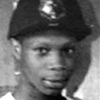 Timothy Stansbury |
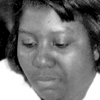 Alberta Spruill |
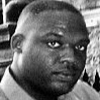 Patrick Dorismond |
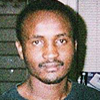 Amadou Diallo |
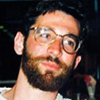 Gidone Busch |
 Anthony Baez |
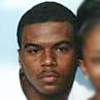 Sean Bell |
Race looms large over the Sean Bell killing, as it has over many of the controversial police killings of the last decade - and before as well. Amadou Diallo, Patrick Dorismond, and Timothy Stansbury were all black. In the last decade's most controversial police killings, only one victim, Gidone Busch, an Orthodox Jew, was white.
In the latest case, many commentators disputed that race played a role, noting that two of the officers involved are black and one Hispanic. Mayor Michael Bloomberg has said that, while the shooting seemed "inexplicable" and excessive," race did not appear to be a motive.
Few would say the police shot Bell simply because he is black. But many do maintain police treat black New Yorkers, along with Hispanics and other immigrants, differently than they treat white New Yorkers.
Racial Profiling
City Councilmember Letitia James sees a "suspension of the constitution in communities of color." On a recent visit to a city housing project, she said, she saw police confronting youngsters for riding bicycles or wearing bulky coats. Police, critics say, tend to view black men, particularly young men, perhaps wearing baggy pants, do rags and other street garb, as likely criminals.
Some police actions taken last week seemed likely to bolster such complaints. In an effort to find the fourth man they believe was in or near Bell's car at the time of the shooting, police raided several apartments in the Bronx and Queens and arrested at least six people. "Cops are hassling everyone in the complex," one man told the Daily News. "They're messing with poor people. They're trying to frame poor people."
"The police are getting desperate, said Kenneth Cohen, regional director of the NAACP Metropolitan Council. "The weapon is a fantasy." On Friday, he said the NAACP was continuing to receive reports that "the police are out in large numbers and dealing aggressively in the communities."
To confront such actions, the NAACP has proposed a national law to ban racial profiling that also includes funds to provide better police training.
The City Council passed its own anti racial profiling law after the Diallo shooting, requiring the police department provide statistics on the race of people they have stopped, questioned or frisked during the previous three months. But, the New York Civil Liberties charges that the police have not complied with that law since 2003. The police department has repeatedly denies it uses racial profiling.
James thinks a more diverse, better trained - and better paid -- police department would also better serve the city.
Civilian Complaints
In general, citizen complaints against the police have increased in recent years. The city's Civilian Complaint Review Board received 4,122 complaints against the police in fiscal year 2002. That rose to 7,373 2006, according to the Mayor's Management Report. But, the report notes, only 3.7 percent of the complaint filed were substantiated.
The city has argued that complaints have increased because it is now easier to file them because of systems like 311. The civil liberties union disputes this and is planning a detailed analysis of complaints.
Bloomberg's Behavior, Kelly's Conduct
"We all agree that there is a pattern of police abuse of power and this abuse of power ranges from police killing to police brutal behavior to disrespect. We reiterated that over and over again," Herbert Daughtry, a prominent Pentecostal minister, reportedly said following a meeting between Bloomberg and black leaders at City Hall last week.
That such a meeting took place seemed to indicate an improvement in the racial climate of the city and in police community relations from the days of Mayor Rudolph Giuliani. He did not meet with black leaders after Diallo's death and following Dorismond's shooting tried to attack the man's character. "Just the simple fact of meeting or discussion or expressing concern and outrage on the part of this administration was different," City Comptroller William Thompson told reporters last week.
Ray Kelly, who also served as police commissioner in the Dinkins administration, has had a generally good reputation in many parts of the city.
But following the Queens shooting, some critics questions whether Kelly - and by extension Bloomberg -- have done enough to improve the way police operate in minority neighborhoods. A few officials, notably Brooklyn City Councilmember Charles Barron called for Kelly's ouster. While few went that far, and Bloomberg stressed he would keep the commissioner, the shooting has hurt him with some onetime supporters.
"Ray Kelly's word is seen as good in a lot of our community but now his word is on trial," the Reverend Al Sharpton has said. "This is the greatest challenge of his career. It could result in Ray Kelly having a halo around his head or the undoing of a very popular image."
And many say if Kelly is culpable so is Bloomberg, who appointed him. "We are fed up with empty apologies, slippery explanations and dumb excuses. It's time for accountability at the top," Hazel Dukes, chairwoman of the state NAACP said in a written statement.
POLICE PRACTICES
Some degree of violence is inherent to police operations. At the same time many New Yorkers focused on the Bell shooting, a man stood trial in Brooklyn for the execution-style murder of two undercover police officers who were trying to get illegal guns off the streets. But while risks - to officers and to the community - can never be entirely eliminated, experts point to certain police procedures that may have contributed to Bell's death.
Special Units
In both the Amadou Diallo case and the Sean Bell case, the shooters belonged to an undercover special police unit, the street crime unit in the first instance, the club enforcement unit in the second. Rather than being assigned to a precinct, these plainclothes officers focus on a specific problem throughout the city - illegal guns, say, or problems at nightclubs
The fact that the cops are undercover and out of uniform creates risks for them and for others. No one knows that they are cops and so may run away or fight when confronted by them.
But the problems go beyond that. In the days of community policing, Councilmember Letitia James said, "A lot of the officers knew the players in a community - good and bad." But the special units, she continued, lack that familiarity and instead have an attitude that "these are our streets and we're taking them back"
"I don't think a beat cop would have fired" outside Kalua Cabaret, said Peter Moskos, a former Baltimore cop who now teaches at John Jay. "The old fashioned beat cop has a more accurate perception of danger."
To fight prostitution in this instance, uniformed officers posted outside could have discouraged soliciting from spilling out of the club and onto neighborhood streets. "There is nothing these officers did that an officer in uniform could not have done," Moskos said. But he added that police culture encourages the use of undercover units with standard patrols considered the bottom of the ladder, while assignment to a special unit is viewed as a promotion.
Politics encourages the special groups as well. The police department created the nightclub unit in response to the uproar over celebrated murders linked to the city's nightlife. The unit first worked in Chelsea, and after problems there abated, moved to the Kalua Cabaret.
In 2002, Ray Kelly disbanded the street crime unit. And last week, he announced that a committee would review procedures for undercover operations.
The 50 Bullets

Many New Yorkers were as shocked by the sheer number of rounds fired at Bell as by the death itself. The barrage is largely due to the use of semi-automatic weapons, which the NYPD began issuing in 1986. But following the Diallo shooting, Ray Kelly wrote that the "barrage of police gunfire requires us to look back at how New York City police officers went from carrying virtually any weapons they wanted to the current high-capacity, semi-automatic pistols." There has been no reported discussion of such an examination now.
Police shoot to kill - not to disable people or to warn them. Experts attribute this to the danger posed by a wounded suspect and note that in real-life - unlike the movies - police can't simply shoot a gun out of someone's hand. "This is not the Old West," one former New York state police investigator once explained.
A hail of gunfire may arise out of the chaos and confusion surrounding an incident such as the one in Queens. Some police experts have attributed the barrage to "contagious shooting" - one officer opens fire and others, afraid the first faced a threat, follow suit.
The Frequency of Gunfire
The New York Civil Liberties Union said the number of shots fired by New York City police increased sharply from 2004 to 2005. Donna Lieberman said she was not sure why this is the case but thought it might spring partly from a "siege mentality" on the part of the police, which is also seen in some anti terrorism activities and the increased police presence in schools.
According to figures released by the department to Associated Press, though, New York City police are not trigger-happy. So far this year, they have killed 11 people, less than departments in some far smaller cities. In Las Vegas-which has about one-14th the number of police New York has - cops have killed 12 people in 2006.
And the level of shooting in New York has fallen sharply. Police fatally shot 54 people in 1973, 30 in 1996 and 9 in 2005.
"There's always a spotlight on the NYPD," Maki Haberfeld, a professor at John Jay College has said. "But in terms of actual numbers of shootings and their use of force, there's no doubt in my mind they are one of the best department s [in] the country."
Using Force
Whenever an officer uses a gun, questions surround whether that action is justified.
In this instance, one question has revolved around whether police should fire when facing a threat from a car. Official policy says no: Killing a driver of a moving car could pose an even greater threat to anyone in or near the vehicle. But many say this policy is unrealistic and sometimes ignored.
Generally, though, the issue comes down whether the police involved in a shooting faced a reasonable fear of death or serious injury. Police stress they do a vital, dangerous job and so must respond to genuine threats.
In the Diallo case, "the officer hunted a serial rapist whom Diallo resembled," Patrick Harnett, a former police officer wrote at the time. "Surely we want police to look for such a menace-who may have attacked 51 women-and we'd expect them to stop and question anyone who looked like him.... If the officers believed the suspect was shooting at them, wouldn't we expect them to shoot back?"
In the Queens shooting, even if the men in the car were unarmed, police had reason to be worried about the car, careening back and forth, according to Michael Palladino, Detectives' Endowment Association. "I do not think the amount of shots were excessive because there was deadly physical force used against our detectives and the detectives used deadly physical force back. They continued to fire until the threat against them ceased, " he has said. As in Queens, a police officer can fear death - even if the suspect does not have a gun. In the death of Gidone Busch, a jury agreed that the police had reason to fear - and fire 13 times at - the mentally ill man wielding a hammer.
The Judicial System's Response
The Bell case now rests with the Queens district attorney. But even if he seeks and wins indictments of one or more of the involved officers, a look at history reveals how difficult it would be to get a conviction.
Nineteen-year-old Timothy Stansbury, died one night in 2004 when he climbed the stairs to take a shortcut across the roof of his Brooklyn apartment development. Police officer Richard Neri Jr., was patrolling the roof with his gun drawn and shot the unarmed 19-year-old. A grand jury did not indict acquitted Neri.
Families of those killed from police have won financial settlements from the city government after filing suit. Earlier this year, for example, the city gave $3 million to the family of Ousmane Zongo, an unarmed man from Burkina Faso killed in a raid on a Chelsea warehouse - a raid that had nothing to do with him - in 2003.
Meanwhile, some are calling for other investigations. Councilmember Letitia James thinks a special agency should look into any fatality caused by police, much as the city now probes the circumstances involved when any child in its child welfare system is killed. She, the Civil Liberties Union and others also want Governor-elect Eliot-Spitzer, the current attorney general, and his successor Andrew Cuomo to launch an independent investigation of the shooting. Such a study should focus on police department policies that may have contributed to the shooting.
Noting that Spitzer conducted an investigation of the Diallo shooting, Donna Lieberman of the New York Civil Liberties Union said, "Unless the government takes this unwanted opportunity created by this terrible disaster and uses it to try to figure out in a meaningful way what's gone wrong, we can't hope to reduce the risk of this happening again."
Â





